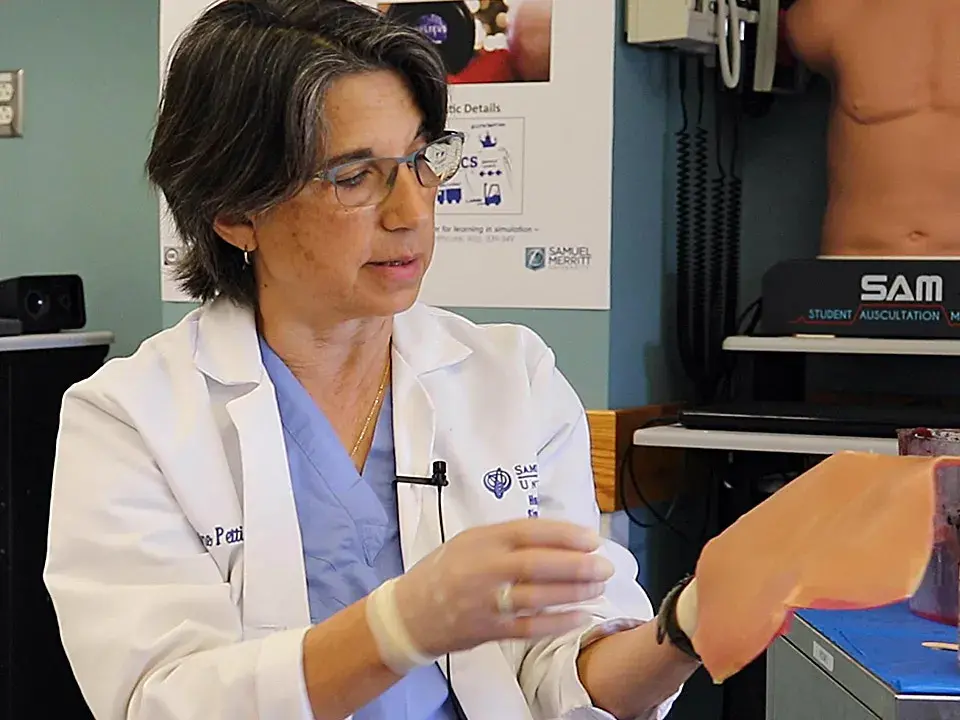Health Providers Once Learned to Suture on Discarded Pigs Feet. Not Anymore
Lorraine Petti is a self-proclaimed “mad scientist” when it comes to making skin. An associate professor in the Physician Assistant Program, Petti has been creating skin for her students to practice suturing for seven years, refining her recipe over and over to make it as realistic as possible.
Petti has over 30 years of clinical experience in emergency medicine and recently retired from UCSF’s emergency department as senior physician assistant. SMU News asked Petti what makes her want to create skin for her students.
How did you get started creating skin?
A few years ago, I attended some workshops and learned to make my own skin using silicone materials and it has turned out to be the most realistic material for our students to practice on.
What materials do you use?
The primary ingredients are five different layers of silicone with stretchable fabric imbedded. I use colored dye to give the skin different tones. The silicone is poured onto a piece of leather that is attached with binder clips to a wooden board about 6 inches by 18 inches. Each layer of silicone must dry for about an hour before the next layer is poured and then the finished project sets overnight. After it completely sets, I peel the silicone off the leather-covered board and trim it.
What do students use the skin for?
Mostly they use it to practice different suturing techniques.
Did you learn suturing this way?
Oh, no. I learned on pigs feet, which was common practice in health care back then. But pigs feet aren’t very useful. You hit bone almost immediately when you try to suture so it’s not realistic. Foam pads replaced pigs feet and more recently silicone pads have provided a more realistic platform for training.
How is your skin different?
The silicone pads available for students to purchase are expensive, often between $25 and $100 for a small square that doesn’t feel much like skin, in my opinion.My recipe is made with five layers of silicone with elastic material embedded to mimic the outer skin, dermis, subcutaneous, and muscle layers. It’s made to mimic the skin’s ability to stretch, something that is lacking in many of the products that students can buy. For example, my skin holds wrinkles for a few seconds when you pull it up. It’s elastic enough that students can invert and evert the edges during suturing, techniques that are used with different types of stitches.
Is your skin used for simulations other than suturing?
Yes, we use the skins to practice injecting and draining joints by stretching them over model skeletons, and for drawing blood, making incisions and draining infected wounds, lumbar punctures (spinal taps), inserting central venous lines, skin stapling, and more.
What do your students think about your skin?
I give each student a skin and suture tools at the beginning of their suturing lab. They have several months to practice on the skin before they are assigned to clinical rotations. I hear that many students still have their skins and use them to practice for many years after graduation.



